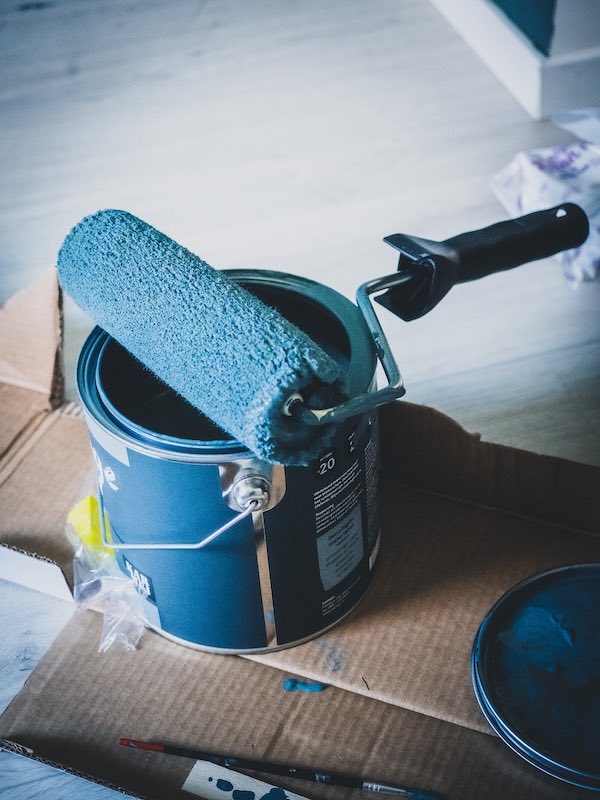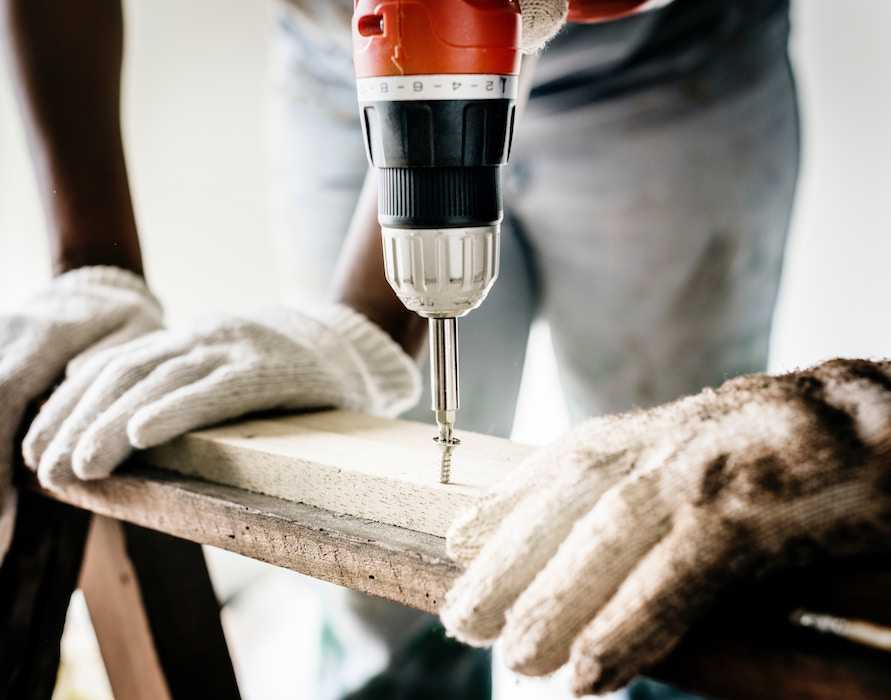Financing a Home Improvement Project During a Pandemic
Many of us are home more than usual these days, and you may be thinking about ways to improve your home -- whether it’s expanding your new home office, replacing your windows, repainting your bedroom, or putting in a new swimming pool for the summer. It’s fun to dream about those new projects, but figuring out the best way to pay for them can be challenging and have a lasting effect on your personal finances.

It’s not just your lifestyle that’s been impacted by the coronavirus pandemic. Many banks, finance companies, and online lenders are changing the way they lend money to customers. Since your options for financing a home improvement project may have changed, it’s even more important than ever to make sure you know what you need so you can focus your search on the right solution for you.
There are a few simple questions to ask yourself that can help you make the right decisions for your project financing that can keep you enjoying it for years to come.
3 Questions to Ask Yourself About Your Home Improvement Project
1. Are you in a hurry to get started?
Do you need to replace a major appliance immediately, or do you have some time before construction begins? Some financing is faster than others, but you may pay a price for speed. Here’s more info on how to pay for an unexpected expense, like a broken appliance.
2. Will your costs happen all at once or over time?
If your project will have ongoing costs (like many home improvement endeavors), it might be attractive to only pay interest on what you’ve spent and to have the flexibility to spend some of your funds, pay it back, and spend again. Keep in mind, with unpredictable shelter-in-place orders, the timeline of your project may extend.
3. Is the cost of your project a sure thing or will it creep up?
Even the best budgets have surprises. Choosing a more flexible financing option now may prevent you from having to apply for credit again later, which may save you money and limit hard inquiries that can ding your credit score. Of course, it’s always a good idea to try to stay within your budget and avoid overspending on your project.
3 Things to Ask Yourself About Your Home Improvement Project Financing Options
1. Do you have equity in your home you can tap into? Do you want to?
Financing that relies on the equity in your home often has lower interest rates than unsecured options. If you have equity available in your home, are you comfortable using your home as collateral and potentially risking foreclosure if you can’t make your payments?
2. How much flexibility do you need in your monthly payments?
In a time of uncertainty, it may be more attractive to choose an option with fixed rates and payments that you can plan around.
3. Do you know what is available to you in the market right now?
In a time of unprecedented uncertainty, many lenders have temporarily stopped offering certain products or seriously raised the bar for what it takes to qualify. Make sure you aren’t counting on funding from a financing product that isn’t available anymore.
What are your home improvement financing options?
The news about COVID-19 changes daily, so keep in mind that the economy, stock market, and the lending policies of various lenders may change.
Once you’ve figured out whether you need money upfront, flexibility to access funds, or fixed rates-- it’s time to start narrowing down your choices. These financing options are listed in order of fastest time to receive your funds to slowest. Keep in mind, timing may vary by provider and based on your credit profile, and it’s important to consider other factors as well.
1. Traditional Credit Cards
What is a traditional credit card and how does it work?
Most of us are familiar with traditional credit cards. They are revolving lines of credit, which means you can spend up to your credit limit, and then pay back your outstanding balance and spend again. They can be used wherever credit cards are accepted, and some offer (expensive) cash options as well.
What are the Pros and Cons of a Traditional Credit Card?
Great For:
- Fast funding – fast approval process and many cards are available for instant use
- Projects with ongoing expenses – flexibility to spend, pay down the balance, spend again
- Pay for what you use – revolving structure means you only pay interest on what you’ve spent
- Potential for low short term rates – promotional rates may save you money in interest if you can repay quickly
Not Great For:
- Paying less interest – higher rates than most other options
- Predictable payments – rates are typically variable and can rise
- Overspenders – traditional cards make it easy to overspend and run up unmanageable debt
- Cash expenses – most cards have very expensive cash advances
Bottom Line on Traditional Credit Cards
Traditional credit cards are ubiquitous but expensive. They offer speed and flexibility compared to many other options, but they will almost certainly cost you more money.
2. Upgrade Card
What is Upgrade Card and how does it work?
The Upgrade Card is not a credit card. Instead, it combines the flexibility of a card (it can be used wherever VISA® is accepted, except for ATMs) with the predictability of a personal loan (each month, purchases are converted to a fixed-rate installment loan).
What are the Pros and Cons of Upgrade Card?
Great For:
- Quick access – speedy approval process and virtual card can be available quickly
- Projects with ongoing expenses – flexibility to spend, pay down the balance, spend again
- Pay for what you use – unique structure means you only pay interest on what you’ve spent
- Renters (not eligible for dwelling-secured financing) and homeowners who don’t want to use their home as collateral
- Rate sensitive card users – rates can be lower than traditional credit cards
Not Great for:
- Some homeowners – rates are typically higher than secured options
- Overspenders – cards may make it easier to overspend. You can always check out these hacks to avoid overspending
- Projects with a very large one-time cost as the maximum Upgrade Card limit is typically $20,000
Bottom Line on Upgrade Card
Upgrade Card is great for projects with ongoing expenses and for rate-sensitive people looking for quick funding. It combines the flexibility of a traditional card with the low cost and predictability of a personal loan. Get started with an Upgrade Card today!
3. Personal Loans
What is a Personal Loan and how does it work?
Personal loans are unsecured loans that you receive as a lump sum of cash to use however you like. They typically have fixed rates and terms, which means you pay the loan back in set installments over a set period of time.
What are the Pros and Cons of a Personal Loan?
Great For:
- Fast funding – approval process is fast and usually 100% online
- Renters or homeowners concerned with foreclosure risk – available regardless of housing status
- Fixed scope of work – lump sum of cash makes it harder to overspend on your project
- Better rates than other unsecured options – rates are generally lower than traditional credit cards
Not Great For:
- Projects with ongoing expenses or unclear scope – lump sum of money can only be used once without borrowing again. You’ll pay interest on your total outstanding balance, regardless of much you’ve spent and you may need to apply for more credit if you run out of funds
- Some homeowners – rates are typically higher than secured options
Bottom Line on Personal Loans
Personal loans are an easy way to borrow a lot of money at once. A personal loan for home improvement may be a good fit for a project with a set budget or a lot of one-time, upfront costs. You can check your rate for a personal loan through Upgrade with no impact to your credit score.
4. Home equity line of credit (HELOC)
What is a HELOC and how does it work?
A HELOC is a revolving line of credit (like a credit card), which means you can borrow as much as you need, when you need it, up to the limit on your credit line. As you pay down the balance, you can borrow more money again.
Your credit line is based on the equity in your home and your credit, so you must own your home and have some equity built up in order to qualify for a HELOC.
What are the Pros and Cons of a HELOC?
Great for:
- Projects with ongoing expenses – flexibility to spend, pay down the balance, spend again
- Paying less interest – lower rates than most unsecured products, and revolving structure where you only pay on the amount you’ve borrowed
- Tax deductions – some opportunities for a tax deduction of interest, depending on how the funds are used
Not great for:
- Renters (not eligible for dwelling-secured financing) and homeowners who don’t want to use their home as collateral
- Fast funding – underwriting and appraisal process means it can take weeks to get your money
- Payment- or rate-sensitive people – rates are typically variable so may rise
- People looking for financing right now – several banks halted new HELOC applications in May in response to the COVID-19 pandemic so availability may be very limited
Bottom Line on HELOCs
HELOCs are often one of the more affordable and flexible financing options for home improvement work, but it may be especially difficult to get one in the current environment and the process is lengthy compared to other options.
5. Cash-Out Refinance
What is a cash-out refinance and how does it work?
A cash-out refinance is when you replace your existing mortgage with a new mortgage for more than you owe on your home. The difference goes to you in cash, which you can spend on whatever you want.
Your cash out amount is based on the equity in your home and your credit, so you must own your home and have some equity built up in order to qualify for a cash-out refinance.
What are the Pros and Cons of a Cash-Out Refinance?
Great for:
- Paying less interest – rates typically lower than unsecured products and many HELOCs
- Simplified, predictable payments – single monthly payment for your mortgage and your home improvement project, with fixed rates widely available
- Tax deductions – some opportunities for a tax deduction of interest, depending on how the funds are used
Not Great For:
- Renters (not eligible for dwelling-secured financing) or homeowners who don’t want to use their home as collateral
- Payment- or rate-sensitive people – your rate on your entire mortgage may go up due to a higher loan amount.
- Fast funding – underwriting and appraisal process means it can take weeks to get your money
- People looking for financing right now – due to COVID-19, many lenders have tightened requirements for mortgages in general and cash-out refis in particular
Bottom Line on Cash-Out Refinancing
Cash-out refinancing can be an affordable, fixed-rate option for financing your home improvement project, but the process may take considerably longer than it would have during pre-pandemic days and the requirements may be more stringent.
Bottom Line
Financing your home improvement project during a pandemic may complicate things, but it doesn’t need to hold you back. Don’t be discouraged if the loan you’d planned to apply for isn’t available -- take the time to understand your financing options and keep an open mind. There may still be a great way to get the home office or backyard of your dreams!


